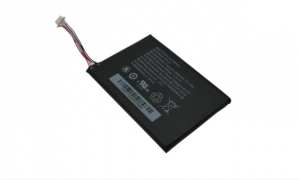Five common problems with lithium-ion batteries
The most important issues that should be paid attention to during the use of lithium-ion batteries are: overcharge, overdischarge, overcurrent, unbalanced charging, and the impact of ambient temperature on battery life. These problems can cause serious damage to the battery and even cause the battery to explode. Therefore, lithium-ion batteries must prevent and solve these problems during use.
I am overcharged.
When the voltage of a single cell of a lithium-ion battery exceeds a specified value, the electrolyte in the battery will decompose. The decomposition of the electrolyte will cause the temperature of the battery to rise and reduce the service life of the battery, and the serious decomposition of the gas will cause the battery to explode.
Therefore, during the use and development of lithium-ion batteries, great attention must be paid to charging issues to avoid potential safety hazards and waste of resources. Battery protection facilities should be installed when charging. When the voltage exceeds the battery value, the set protection circuit should automatically cut off the charging circuit. When the voltage is restored to the range that the battery can withstand, the protection circuit automatically stops working and charges normally. Different lithium-ion batteries are made of different materials, so the voltage they can withstand is different
When protecting the home circuit, it should be placed according to the specific battery material.
In addition, when building the protection circuit, you should also pay attention to the error judgment and operation caused by noise. When setting the protection circuit, the overcharge protection delay should be set, that is, when the voltage exceeds the battery for a certain period of time, the protection of the protection circuit is triggered.
Excessive emissions
The problem of over-discharge can also lead to the shortening of the life of the lithium-ion battery. It is particularly important to note that the damage caused by the over-discharge of the lithium-ion battery is irreversible, that is, once the damage caused by the over-discharge of the battery occurs, no measures can restore the battery to a healthy state. In order to properly protect lithium-ion batteries, it is necessary to prevent over-discharge problems and install discharge protection devices. When the voltage of the lithium-ion battery is lower than the discharge voltage monitoring point, the discharge protection device can automatically function to terminate the battery discharge process.
Over current, short circuit and other problems
The problem of overcurrent is that excessive current will cause damage to the battery during discharge, and this damage is irreversible. Lithium-ion batteries have a certain limit on the discharge current. When the discharge current exceeds this critical value, the service life of the battery will be affected.
Over-current protection also needs to set a certain time delay, at least generally several hundred milliseconds. This is also done to avoid the wrong operation process on the battery, but the delay time is too long, and the impact of over-current protection is ineffective. Cause damage to the battery, so the delay time has more accurate space. The overcurrent problem is a short circuit problem with special performance. It is often seen in daily life. When the power plug is inserted into a high-power electrical appliance, it is easy to short-circuit the I-type circuit, which is caused by the damage caused by the large current discharge. Unlike the over-current problem, the short-circuit problem has almost no time delay in protecting the circuit. On the contrary, the circuit should be cut off immediately after a short circuit problem occurs, otherwise it will cause serious damage to the battery and electrical appliances.
Battery equalization
Power lithium-ion batteries sometimes require several, tens or even hundreds of battery wires, and these batteries may be unbalanced during use. This is because battery production has to go through a lot of procedures. Although there are very strict tests in the final process, after all, there are various differences in the production process. After a period of use, these differences will be Began to show up.
In this case, if you have a battery pack composed of multiple batteries, the capacity of the entire battery depends on the capacity of the battery with the lowest capacity. This is the bucket theory. Faced with such problems, a corresponding protection line should be set on the battery to draw excess power from the higher voltage battery, so that the battery can be more balanced. Commonly used equalization methods include energy storage equalization and resistance equalization.
Ambient temperature
With rechargeable batteries, the impact of ambient temperature on battery life is often overlooked. The specifications of the battery indicate the temperature range of the battery, but in a high temperature or low temperature environment, the battery self-discharge rate will be higher, especially high temperature will greatly reduce the battery The service life of the battery, so before buying, you need to communicate with the engineer, given the use of the equipment or the use of the environment, this ability can make the performance of the battery better.
Post time: Sep-03-2021





